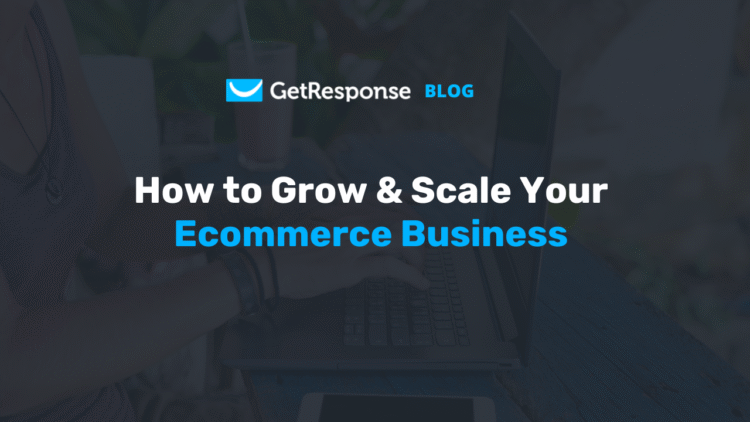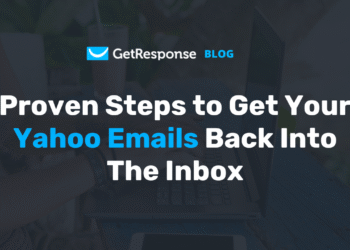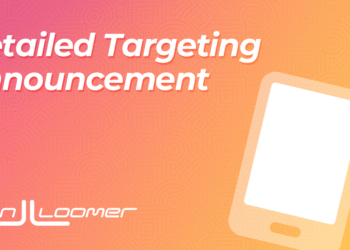Ecommerce business owners always aspire to attract more customers. But what they do not anticipate are the challenges that come with having to meet the growing demand.
Customers expect fast shipping, easy returns, tailored experiences, and personalized communications. This is easy to do when you receive a handful of customers every month. It’s another thing entirely when you’re attracting thousands of customers.
Inventory management, logistics, and unscalable tech solutions turn growth into a nightmare for both your brand and its customers. These challenges can make it impossible to sustain the growth.
This article shares eight ways to scale an ecommerce business in 2025. I will show you how to optimize your customer acquisition efforts, maintain personalized customer interactions, and streamline your fulfillment and inventory operations to achieve sustainable growth.
1. Invest in owned marketing channels
One of the biggest complaints from online businesses in 2025 is that Google’s AI features have eaten their traffic. AI mode and the AI overviews have reduced the number of potential customers interacting with brands directly.
AI search platforms like ChatGPT are not any better, with reports suggesting that the platform is experimenting with running native checkouts soon. In return, they expect to take a cut from the sales.
What does all this mean for online stores?
The best way to ensure sustainable growth in the future is to invest in owned marketing channels. I’m talking about email, SMS, and web and mobile push notifications.
It’s time ecommerce business owners got more intentional about capturing and using first-party data to unlock growth. Use lead generation strategies like exit-intent pop-ups to capture your customer’s email addresses and contact numbers.

Meanwhile, Mac Cosmetics provides incentives for users to join both their loyalty program and sign up for text alerts.

You can also incentivize your customers to provide this data through welcome discounts. Deploy these discounts in your exit-intent pop-ups and during checkout to encourage shoppers to create a customer account and provide their contact details, rather than checking out as guests.
These channels will help you build a defensible business and unlock predictable growth that is not impacted by algorithmic changes or increasing paid ad costs, which happen a lot on third-party platforms.
Use the collected contact information alongside other first-party data like purchase history and customer behavior on your ecommerce website (e.g., browse history) to create personalized campaigns. The best part is that you can automate the campaigns across all owned channels, as I am going to show you below.
Besides building an SMS and email list, you may also want to invest in a mobile app. Research shows that users spend 9.15 minutes in-app compared to 2.34 minutes on desktop and 1.26 minutes on mobile sites.

A well-designed mobile app helps you create a more tailored customer experience. You can use cached content to ensure each customer sees their favorite product categories every time they open the app, for example.
These apps also provide additional customer interaction opportunities through push notifications. That helps you get in front of your customers much faster. No wonder ecommerce mobile apps outperform both desktop and mobile sites when it comes to conversions and revenue.
The same research from above shows that mobile apps generate 39.5% of the revenue, compared to 33.8% for desktop and 26.7% for mobile sites. The most interesting part? Mobile apps account for 30.30% of active users vs 54.3% for mobile sites!
Build Your Owned Marketing Channels Today GetResponse
Stop relying on unpredictable third-party platforms. Start building your email and SMS lists with powerful automation tools that scale with your business growth.
2. Leverage automation
Scaling an ecommerce business does not necessarily mean increasing employee headcount. Automation can help you maintain sustainable growth without increasing overhead costs. You won’t have to compromise the customer experience, either.
You can implement automation tools across several business functions, including marketing, inventory management, and customer support.
For marketing, you’ll need a reliable ecommerce marketing automation solution like GetResponse that supports deep integration with your existing tech stack. GetResponse integrates with major ecommerce platforms such as WooCommerce, Shopify, and Magento. It also connects with popular CRM solutions and online payment processing systems.
The benefit of these integrations is that the platform can track customer activities on your ecommerce site and deliver tailored experiences. It allows you to create automated marketing workflows for campaigns like cart abandonment recovery, welcome emails, and post-purchase campaigns such as cross-sells and upsells.
The platform can also see what products customers browse. This data is used to deploy automated product recommendations that usually see high conversion rates. For example, European retailer Eveline Cosmetics generated $13,000 in monthly sales from a single email campaign. About $7,000 worth of product recommendations were added to the cart from this campaign.
Learn more about that campaign here.
Our solution also offers automated transactional email services. This helps you send email marketing campaigns, such as order confirmations, shipping and delivery alerts, and password reset emails, automatically.
You should automate inventory management to ensure real-time product syncing, demand forecasting, and smart stock allocation to optimize conversions and profit margins.
Automating customer support through chatbots also eliminates tiresome but critical manual tasks to deliver a delightful customer experience.
3. Focus on customer retention
Customer acquisition costs have increased by 222% in the last decade! That makes customer retention invaluable.
The only way to attain sustainable growth for your ecommerce store is to ensure that every buyer who converts turns into a repeat customer. This increases the customer lifetime value, and with it grows your profitability.
You must have heard of the study by Bain & Company, which reported that a 5% increase in customer retention can boost profits by up to 95%.
Enhance the post-purchase experience if you want customers to come back. You can achieve that through timely post-purchase email campaigns. Send your customers order, shipping, and delivery confirmation emails on time, so they don’t have to chase your support team down for these details.
Besides the transactional emails, send warm thank-you emails and SMS messages. Then, stay in touch with your customers through a newsletter strategy that combines helpful content with occasional promotional emails.
Building a customer loyalty program is another effective way to reduce churn and encourage repeat orders. And don’t just reward your customers when they make a purchase. Other critical customer actions also deserve loyalty points.
For example, customers should earn points when they refer a friend or post an insightful product review. This drives customer engagement and demonstrates to the customers that you value their input, not just money.
That’s what Mac Cosmetics does with its popular loyalty program. Check this out.

Plus, this kind of program fuels your growth flywheel. Rewarding customers for referrals and helpful reviews makes them refer more friends and leave even more reviews that you can use to win new customers.
We have an insightful guide on ecommerce customer retention. Check it out here for more details on how to retain customers.
Customer acquisition costs have increased 222% in the last decade. A 5% increase in customer retention can boost profits by up to 95%.
4. Enhance customer service
A poor customer service experience is one of the easiest ways to find your ecommerce brand trending on social media for the wrong reasons. 13% of customers will tell 15 or more people about their experience when they are not happy with a brand.
That’s why you must prioritize customer service when creating your ecommerce growth strategy.
Make sure you have multiple customer support channels. Customers should be able to find you on their most convenient channels.
Next, empower your customer support team with the right training and resources. They should be able to resolve as many customer queries as possible during the first contact. This enhances the customer experience and helps you win customer trust and goodwill.
You can even go as far as allowing customer service representatives to give customers discounts or coupon codes after handling certain types of customer complaints.
You must also take some proactive measures, like building a knowledge base and sharing critical information in advance. For example, use post-purchase emails to inform customers about your return policy and delivery timelines, so they aren’t forced to contact the customer service team.
Investing in chatbots is another way to deliver awesome customer support. Chatbots result in faster resolution and reduce customer complaints.
5. Create brand advocates from existing customers
Using existing customers to attract new ones is one of the most effective ways to reduce customer acquisition costs. Referred customers convert better because modern customers trust their peers more than they do brand advertising. 40% of Gen Z shoppers trust their friends and family the most for product recommendations.
Analyze your customer data to identify your most loyal customers. These are customers with a high repeat purchase rate and LTV. Target them with special incentives to encourage them to tell their friends about your brand.
A double-incentive referral program works well here. Reward both the existing customer and the new customer they refer with a compelling incentive.

Mention this program in key campaigns like post-purchase emails, which tend to see high engagement rates.
Remember to link this referral program to your customer loyalty program to encourage participation, i.e., customers can earn more loyalty points or move to higher customer loyalty tiers when they refer more friends.
Finally, a good referral program is easy to share. Whether you use a referral link or code, ensure it supports a one-click share to avoid unnecessary friction that can reduce participation.
6. Streamline inventory management
Stockouts leave your customers frustrated and give competitors an opportunity to win your lost sales. At the same time, you don’t want to overstock and tie your cash flow in inventory at the expense of marketing and other operations. Plus, it increases your storage costs.
So, use an inventory management system (IMS) to maintain accurate and updated stock levels. The best systems pull data from your various selling points, e.g., website, physical store, and online marketplaces in real time, to ensure your stock is always up to date.
A great IMS tool also supports demand forecasting using seasonal trends and historical sales data. This helps you anticipate and prepare for shifts in customer demand.
7. Outsource order fulfillment and shipping
Efficient order fulfillment quickly becomes a nightmare as your business grows. It is expensive and very prone to error. Building a team in-house to handle this can become costly fast. The better strategy is to outsource this part of your business.
Plus, outsourcing fulfillment can lower your per-order costs when done at scale.
Partner with a third-party logistics provider (3PL) to fulfill your orders. This saves you the cost and time it takes to build a fulfillment infrastructure from scratch.
Pick a 3PL with strategic locations where most of your customers are. You also want a 3PL whose tech stack integrates with your existing ecommerce solution. That makes it easier to track inventory, order status, and shipping performance.
Lastly, look at their reputation and the pack error rate. You want a 3PL that will help you elevate the customer experience, not hurt it.
Scale Your Ecommerce Operations with GetResponse
From inventory management to customer communications, automation is key to scaling without increasing overhead. Start with email marketing automation to see immediate results.
8. Conduct regular customer pulse checks
Don’t get caught up scaling your ecommerce business and forget about the customer experience. Conduct regular pulse checks to confirm that your business growth strategies are not only winning you new business but also keeping your customers happy.
Send customer satisfaction surveys at crucial customer touchpoints, like after a purchase and customer service interaction. You must also schedule regular customer feedback collections. Collect data like customer net promoter score and complement it with qualitative feedback through open-ended questions and interviews.
Social listening can also help you uncover customer issues (or compliments) that need to be addressed.
Act on the feedback and close the loop by letting your customer base know that their complaints have been addressed. This signals that your brand listens.
In closing
Your ecommerce business must find a way to move beyond rented audiences on unpredictable third-party platforms. These platforms are doing their best to keep users within their own ecosystems. The only way to guarantee some level of visibility is through paid advertising, which is also getting very expensive.
Invest in owned marketing and sales channels like email and SMS to protect your business and ensure predictable growth. Automation, customer retention, and referral campaigns are the other levers you should pull to scale ecommerce business.
As your business grows, maintaining customer satisfaction is going to be crucial. For that purpose, you’ll need to provide exceptional customer service, streamline inventory management, outsource order fulfillment, and collect customer feedback regularly.


















